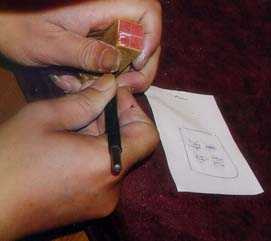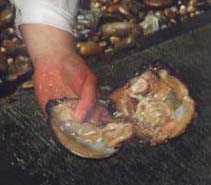
Under the sycamore trees

Wednesday, June 23, It was a rainy day. That is not to say showers off and on. It means rain, steadily, serious Chinese rainy season rain. I headed down to breakfast later than everyone else, electing to find ways to spend some time alone, since a group, even this nice, even-tempered group, can get a little wearing. Sitting there by myself reviewing my Chinese, a waitress came over to serve me some tea and noticed my book. Without my asking, she began helping me with pronunciation for about ten minutes, until I started looking too worried that perhaps she might get in trouble for not attending to other customers. We began the day with a trip to the park where Sun Yat Sen is buried. It was explained to us that the warlords who disrupted the 1911 revolution exposed his body to the air and that is why it is not preserved like Mao's and he is in a closed tomb. I asked our guide if the hero status of Sun Yat Sen had changed since she was a child, and she said no -- she remembered he was in her textbook. Probably he was, but there does seem to be a bit of a Sun Yat Sen renaissance, at least in Nanjing. The trip up to his tomb is 392 steps, representing the 392 characters he used in his three wills. It's a good thing he wasn't a wordy guy! We didn't see any western tour groups there, perhaps it was the weather, but we did see Chinese tour groups. At the bottom of the steps I was able to buy lapel pins of Sun, Deng and Mao all from the same dish. I thought it was an interesting metaphor. While waiting for the group to reassemble for the bus, I wandered into a shop which had a marvelous painting on four large scrolls. I started discussing the price in my limited Chinese and the two salesman eagerly got into a lengthy conversation with me that went far beyond my simple sentences. When our tour guide arrived she hurried over to translate, but it really wasn't necessary. I already knew they were telling me that 5000 Yuan was only a starting price, and that they would give me a discount, even a big discount, and it was a special day, and I was so nice and in any case, would I like to make them an offer. I bargained with them for a bit and we came up with a new price, which they like to divide by 8 (into US dollars) to make it look smaller. In the end I agreed to take their business card and think about it, but I know there are more great scrolls in cities like Shanghai, and I felt it was just too early in the trip for a major purchase. From there we went to a pearl farm, in part so that we could spend time in the pearl shop, but as always, they provide some educational value, letting one of us select an oyster from a pool, and then opening it to see the pearls inside. There are freshwater pearls, usually a soft pink in color, and there were about a half a dozen inside this one oyster. I hope the pictures turn out. The farm is next to a botanical garden which we enjoyed in the rain. While rain adds nothing much to a daily jaunt down a city street, it adds a lot to a garden, especially when you consider that the 72 degree weather could just as easily have been 96 with the sun shining. Well having resurrected the memory of Dr. Sun, we then went to the home of Meiling Soong, the second wife of Chiang Kai Shek (Jiang Jieshi) where we had lunch and a chance to tour the family rooms actually used by Meiling and Jiang. They are mercilessly unrestored, so you have a feeling for the tawdry decadence of the time. Now imagine in Mao's China that the entrepreneurs who runs this little "museum" invite the guests to slip into a Guomindang uniform and get photographed sitting at Jiang's desk, or around his conference table! And indeed there were Chinese tourists taking advantage of the opportunity. The lunch was the worst meal to date --tiresomely catering to American tastes with French fries and the same sweet and sour pork you would find in any American Chinese take-out. Luckily the soup was very good, but we can't seem to get the message across that we really want to eat what everyone else is having. In the afternoon we went to the bridge across the Yangtze river. It was evidently an engineering marvel when it was completed in 1968 -- the first bridge across this major river that divides China virtually in two. Originally the Japanese had tried to start one, and then given up. Then in the 1950s, the Russians helped, but in the sixties they broke with the Chinese and pulled out, so the Chinese did it by themselves. It is a fine bridge, which handles traffic by limiting daytime traffic to odd and even license plates. Trucks which don't know the plan arrive at the bridge and have to wait on a siding until eight o'clock to cross. It was two o'clock when we got there, and already trucks were on the siding. We were invited in to see a model of the bridge and then to take an elevator up to the top of one of the bridge's towers. Interestingly enough there are two identical towers, one is used for foreign tourists and one for Chinese tourists, but the foreign elevator was broken, so we got to go up on the local side. Could it be a coincidence that there were no locals up there when we were? From there we headed over to take a boat ride up and down the Yangtze -- a total trip of about an hour. It was a great experience, especially for everyone else, who is not going to go on the trip to the gorges as I am in July. What struck me about the boat ride is that there was no sign, no hawkers of postcards, no gift shop, clearly an untapped resource waiting for the right entrepreneur. I guess we could take bets on when that moment will come. During our two hours of free time I went off to collect the sign I hand made and came back for a half hour of quiet contemplation watching Clinton in Macedonia and Larry King regurgitating the Clinton scandals. It seems quite unimportant here. We assembled at 5:40 to go to the Confucius Temple Area, which many of us assumed would involve visiting a temple. Not so, since pretty much everything in Nanjing had been destroyed. This area has been rebuilt, like South Street Seaport or Faneuil Hall. I bought some excellent binoculars in anticipation of the Yangtze river trip ($10). We ate dinner in an excellent local restaurant where we were joined by local residents who had attended the University of Illinois under Freeman fellowship grants -- the same foundation sponsoring our trip. After dinner we all complained that they served too many dishes -- we hate to see the waste, but the table is literally still full of food when we finish. Tonight I counted 21 different items set for our table of 8. Many were small like a dim sum brunch, but it still seemed excessive. We learned about the trees today. There are 20 trees in Nanjing for every person. 30% of the land is trees. The sycamores which can grow tall and straight, are clipped so the outer branches grow and then end up with a broad leaf base, like a maple tree. On the main streets which are very wide (separate lanes for bicycles) they are nice, but on the side streets they are splendid, forming a canopy over the whole street. This is, indeed the richest province and has been since ancient times. There is a saying that there are "fish in the rice paddies," which our guide suggested was the same as calling it a "land of milk and honey."
|

